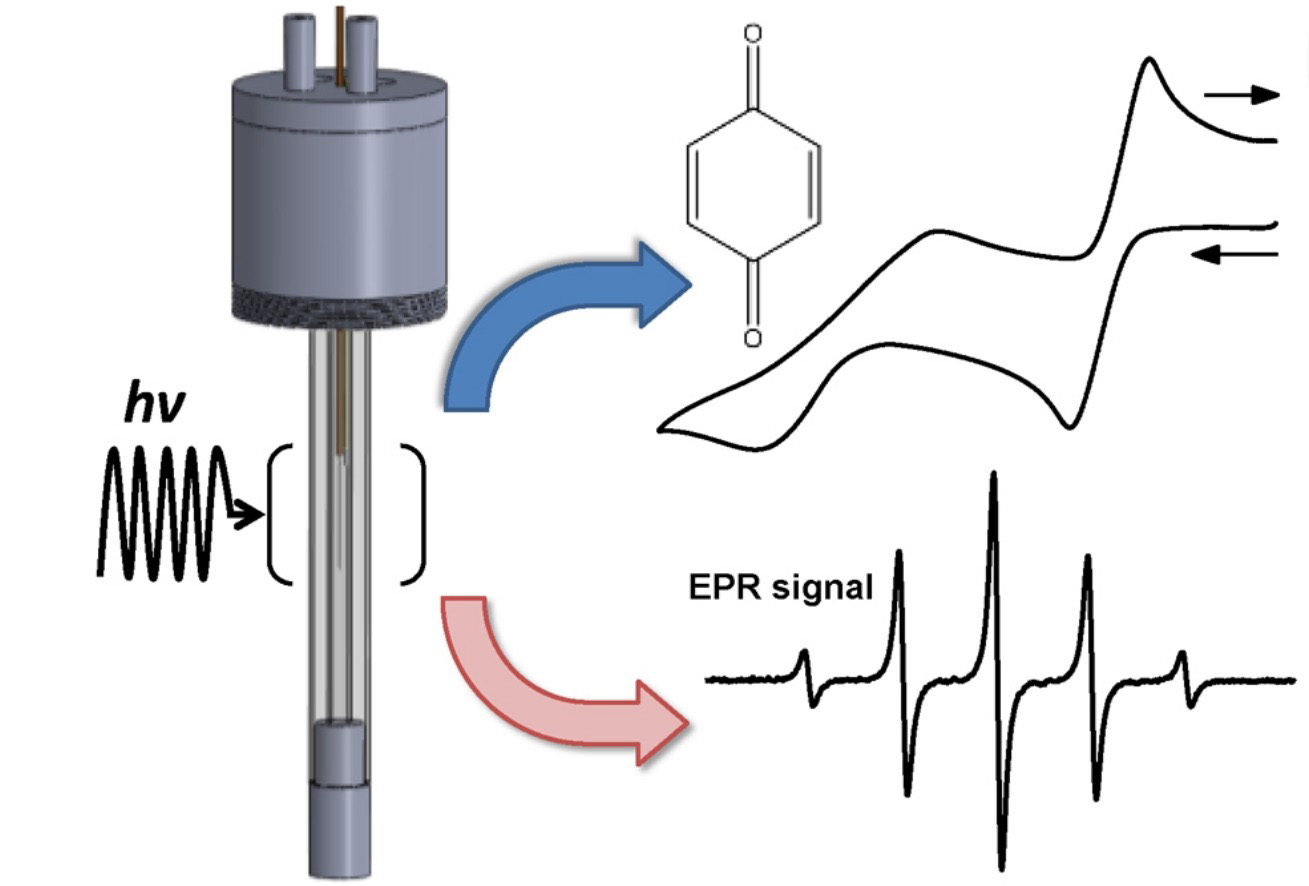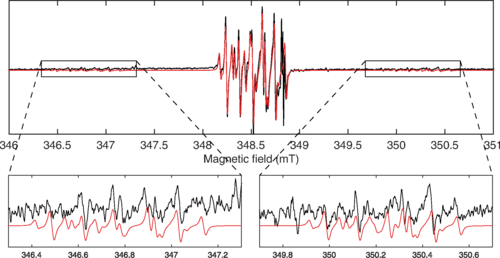EPR

Electron Paramagnetic Resonance
Its a spin thing
EPR Spectroscopy
EPR is a spectroscopic method employing magnetic fields and microwaves to study materials and molecules with unpaired electrons. Unpaired electrons play crucial roles in many processes such as photosynthesis, oxidation, catalysis, and polymerization reactions. They can also be found in solids such as defects in semiconductors.
EPR is capable of obtaining, chemical and structural information about the environment around the unpaired electron, as well as quantification of the unpaired spins. As a result EPR crosses several disciplines including: chemistry, physics, biology, materials science, medical science and many more.
Instruments
We have three EPR Spectrometers available with excitation at both X-Band and Q-Band cover CW Pulsed and Rapid Scan Experiments. We can offer variable temperature (4K - 500K) and Optical Excitation for most experiments. Further information can be found on our EPR spectrometers page.
Case Study
Radicals produced during electrochemistry are an obvious candidate for study via EPR. traditionally this is achieved by performing the electrochemistry externally and stabilising the radicals with a spin trap such as DMPO before transferring to EPR for Study. By performing the electrochemistry it may be possible to provide new insight into the electrochemical systems.
Results

By combining in-situ electrochemistry with EPR it was possible to quantify the produced radicals and intermediaries within 3% accuracy over a threefold concentration range. The set-up has high sensitivity, with the quantification of 3–4 μM concentrations shown to be routine and even sub-μM concentrations when using signal averaging. for more details on this experiment please see https://doi.org/10.1016/j.electacta.2016.07.114Link opens in a new window
Case Study
Diamond has recently attracted attention as a host for optically active point defects with potential applications in such as quantum communication. One defect of interest silicon vacancy requires silicon doped samples which have not been extensively studied. EPR can not only be used to study silicon vacancy itself but also other defects in the lattice which may impact on its performance.
Results

We were able to measure spectroscopic signatures indicating the presence of nitrogen and silicon and were able to assign the EPR signal silicon-vacancy complex decorated with a nearest-neighbour nitrogen SiVN, This results supported by theoretical calculations. In this research EPR also helped to give insight into the charge transfer effects within the sample. for further information please see https://doi.org/10.1103/PhysRevB.101.184115
Internal Enquiries
If you wish to be trained on the systems, please submit an online training request and we will get back to you. Alternatively, if you wish to have a sample run for you or want further information contact us on spectroscopy@warwick.ac.uk.
Approved Users
To make a booking use our booking pages. You may also want to check for any known spectrometer issues on the Instrument status pages.
Please remember to submit a sample submission form before bringing samples into the lab.
External Enquiries
For information about using the RTPs as an external customer, please contact Warwick Scientific Services scientific.services@warwick.ac.uk or visit the WSS website.
